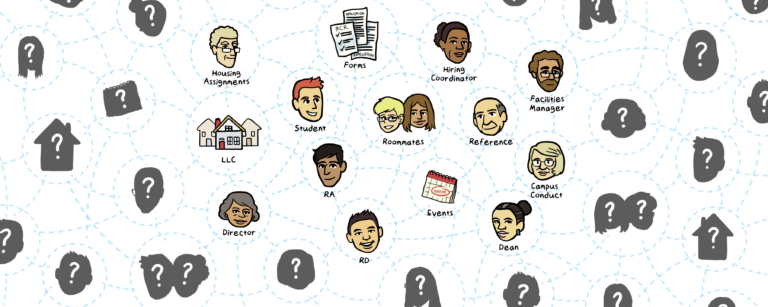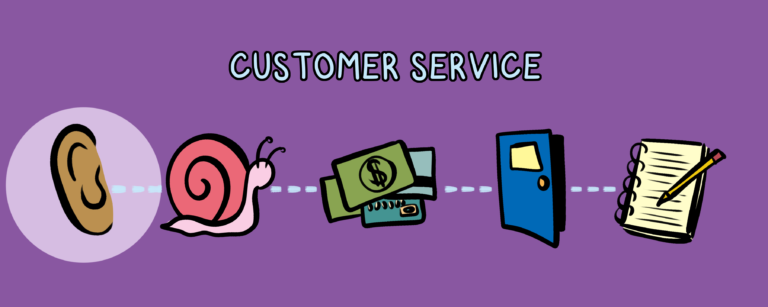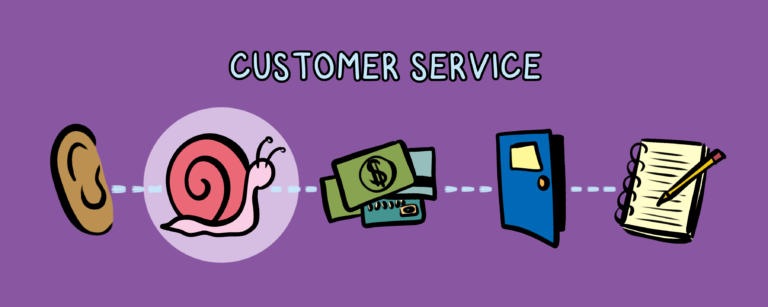Oh hey! Welcome to the community!
When I think back to my university experience, the dining room is frequently the backdrop for many memories. Sitting with others in our pajama pants, recounting the events of the previous day or night, and sharing study tips for our upcoming exams, the dining room was more than a place to eat; it was a place to connect. Since then, a lot has changed. Here’s what we know:
- Incoming populations of students are having more difficulties initiating one-on-one conversations with new people.
- Meal plan types can both limit and facilitate your ability to connect with others.
- Students respond well to personalized engagement from a mentor (RA).
- Wellness is increased when one eats with at least one other person.
Social Media and the Impact on Dining
Social media has changed the function of the dining room. No longer do students need to find a shared physical space to connect-they can do that online. They don’t need to talk to their friends to recount what happened last night because SnapChat and Instagram will tell you the story. Missed a class? Don’t worry! The notes are all online. The incentive for visiting a dining room has changed, yet the value of the connection has not. As Residence Life professionals, we need to adjust the way we promote and interact in the dining room to bring back the value of connection to the common eating space.
How can we use this information to facilitate community building and connections in our dining spaces?
Make the Dining Room a Destination
If we provide food that our students want to eat, and it’s conveniently accessible, the students will come. The ultimate goal is to have students moving through our spaces so we regularly have eyes on them. The next step is to figure out how to have them take time to sit down and eat. Lastly, we want them to engage while they’re eating.
If the food is good and the atmosphere is welcoming,then the people will come. Food service providers at post-secondary institutions understand the value of nutrient-rich food that promotes students to eat healthier and take care of their bodies and minds. An increasing number of culinary departments is adapting to the principles of Menus of Change. David Speight, the Executive Chef & Culinary Director at the University of British Columbia, says over 75 institutions across North America have adopted a Menu of Change mentality, calling it a “game changer for how universities are serving students.” Speight is confident that as the food values and expectations shift for students, institutions will start attracting more talented chefs and “food will become a highlight of a student’s university experience.” If the food is excellent, the students will want to eat in our dining rooms, and our Residence Life Staff can take it from there.
We Dine Together
It can be intimidating to enter a dining room full of strangers, even if they are your peers and possibly even your administrators and faculty. Your cell phone is an easy distraction from the lack of comfort around eating alone. Inspired by the initiative of a group of high school students, We Dine Together provides an innovative and simple solution: having a team of ambassadors whose sole purpose is to engage with students who appear to be eating alone. The engagement does not have to be extensive, but rather a short conversation with a fellow community member to make the big feel small. Often, students are simply looking for a familiar face in a sea of strangers. The hope is as a result, students will find the inspiration to pay it forward and reach out to another person. Recognizing the individual and ensuring they feel noticed can be one of the most powerful elements in community building.
Set Up for Success
Student success and health is always at the forefront of decision-making at post-secondary institutions. There is no argument that the presence of RAs in a dining hall is beneficial, but do you include expectations about their presence in their job description and add some meal plan credits as part of their compensation? By placing expectations around dining room engagement in a job description and on performance evaluations, you show your staff that you value this kind of interaction.
The current generation likes to check boxes to fulfill requirements. Document their interactions with residents in the dining room as intentional interactions. Weave engagement in a dining room throughout your learning outcomes and lesson plans, and you’ll see the results. Host your one-on-ones with staff in the dining rooms, and you’ll quickly see others replicating the behaviors. It’s understandable that not all topics can be discussed in a public dining room. However, it’s a great place to start.
Meal Plans and Community Building
There is no doubt that the type of meal plans offered will impact the culture and dynamics of your residence dining facilities. Whether you provide an AYCTE plan, a set number of meals, or a declining balance plan, you will face challenges in the engagement of your students because of the competing factors. It could be beneficial to look at your learning outcomes and determine what is essential and relevant to your students.
What seems to be important is that the dining room is no longer an organic community building petri dish. We need to encourage our student populations to engage while eating and remove distractions. AYCTE plans encourage students to stop and eat, yet they pose challenges to inviting friends. Declining balance plans make it easy to pop by the dining rooms frequently and with friends; however, they pose challenges in getting students to stay and engage.
By assessing where the voids are in your current community building approach, you could select a plan that fills the gaps. For example, maybe your floor communities are good, and, as a result, it’s less important that students are eating together in the dining room. If that’s the case, you may choose a declining balance plan and use it to educate students on social sustainability and financial literacy, as well as using the dining spaces to promote smaller niche communities. If your residence communities are lacking and seem unconnected, an AYCTE plan may be the answer that brings students together, forces them to pause for a minute, and allows them to share new food experiences with their peers.
Residence Life and Residence Dining
Residence Life and residence dining are undoubtedly intertwined. It’s fundamental to the success of a Residence Life program to work together to create a seamless experience for students. Sitting down to eat dinner with others allows our students the opportunity to take a break from the books and the screens, engage in dialogue, and share an experience with someone else. It is our job as Residence Life professionals to create a space where our students want to be; a space that is welcoming, where students feel like they belong, and where the food is good and it feels like home. Our students are struggling to engage with others, and residence dining could be the key to showing the value of engagement without forcing students to attend a program. At a minimum, it creates opportunities for intentional interactions on a daily basis, and, at best, it provides the catalyst for lifelong healthy habits of taking breaks and sharing experiences with friends. It is our job as Residence Life professionals to create a space where our students want to be.
Thanks for being part of our community. We’re glad you’re here.






